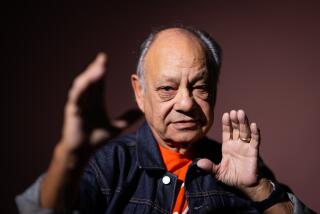Even in Ruins, Mission Was an Inspiration : Art: Officials of the San Juan Capistrano landmark and the Irvine Museum shine new light on a legacy of period paintings.
SAN JUAN CAPISTRANO — For more than a century, artists searching California for romance, beauty and history have been attracted to the ghostly ruins, graceful arches, bubbling fountains and exotic gardens of Mission San Juan Capistrano.
“It is the most-often-portrayed architectural structure in California and by far the most popular of the state’s 21 (Franciscan) missions in art,” said Jean Stern, director of the Irvine Museum.
The museum’s founder, Joan Irvine Smith, a leading collector of California Impressionist landscapes, is publishing an art book about the state’s missions that underscores the prominence of Orange County’s mission, founded by Father Junipero Serra in 1776 to help the Spaniards colonize California.
The release date for the 128-page book, Stern said, will coincide with an exhibit of California mission art by Impressionists from 1890 to 1930 and even earlier artists that will be shown on the grounds of Mission San Juan Capistrano on June 17 and 18.
Gerald Miller, administrator of the San Juan Capistrano mission, said Smith and the mission are collaborating to draw public attention to the mission’s place in Orange County culture and to revitalize the mission’s historic function of encouraging art.
As early as the 1830s, Miller said, itinerant artists came on horseback to sketch the crumbling remnants of the mission’s Great Stone Church, which was destroyed in the 1812 earthquake.
“Undoubtedly the ruins of the Great Stone Church were the most enchanting ruins on the North American continent,” historian Henry Wharton James wrote in 1905.
In the last half of the 19th Century, artists discovered that the remainder of the stately mission, which endured looting and changes of ownership before Abraham Lincoln returned it to the Catholic Church in 1865, also had fallen into a state of severe neglect and decay.
Greatest credit for the mission’s renown as an art subject is given not to an artist but to a priest, Father St. John O’Sullivan, a tuberculosis sufferer who became pastor of Mission San Juan Capistrano in 1910.
“He said he felt a great affinity for the mission because it was in as bad a shape as his own body,” said Miller.
O’Sullivan took giant steps to clean up, restore and beautify the mission grounds, planting gardens of flowering trees and shrubs brought by ship from distant parts of the world. Many of the gardens, Miller said, were modeled after those of the Alhambra, a Moorish citadel built in the 13th and 14th centuries in Granada, Spain.
The bright splashes of bougainvillea, roses and jacaranda made the adobe-walled mission even more attractive to color-conscious Impressionist artists who loved to paint outdoors amid nature.
After the artists arrived by train at San Juan Capistrano, which gained railroad service in 1895, they were charmed into lingering there by O’Sullivan’s exceptional hospitality.
Miller said O’Sullivan, who was an art aficionado, encouraged artists to paint the mission grounds and even invited them to lodge at the mission as his guests.
Moreover, Miller said, O’Sullivan recognized that artists often had to scrounge for financial support, so he allowed them to sell their paintings to tourists as souvenirs.
These paintings, Stern said, frequently turn up at auctions in the East and Midwest. Some may sell for up to six figures, he said.
In return for his friendship, O’Sullivan received gifts of paintings from a number of his house guests, including an oil painting by Charles Percy Austin of silent-screen star Mary Pickford’s first wedding, which was celebrated in 1924 at the mission.
It was to enlist assistance in cleaning and restoring these old paintings, Miller said, that he contacted the Irvine Museum last October and learned of Smith’s interest in arranging a show of mission art.
The June show, which will include works from the Irvine and Bowers museums and from several private collections, reflects the mission’s renewed involvement in the arts, Miller said.
The mission, helped by the California Art Club in Pasadena, will invite Impressionist artists to spend a week in August painting in the courtyard.
Tourists will watch artists work and the paintings will be judged.
More to Read
Sign up for Essential California
The most important California stories and recommendations in your inbox every morning.
You may occasionally receive promotional content from the Los Angeles Times.










